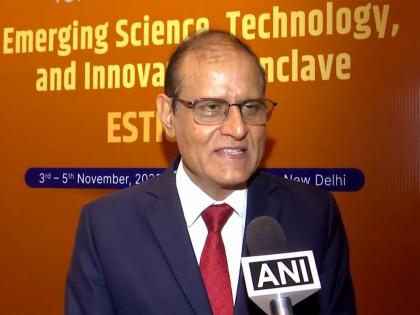Indigenous SatCom, ISRO partnership driving India's connectivity revolution: C-DOT CEO
By ANI | Updated: November 5, 2025 19:25 IST2025-11-05T19:23:03+5:302025-11-05T19:25:03+5:30
New Delhi [India], November 5 : Indigenous innovation in SatCom (satellite communication), supported by ISRO's expertise and startup partnerships, ...

Indigenous SatCom, ISRO partnership driving India's connectivity revolution: C-DOT CEO
New Delhi [India], November 5 : Indigenous innovation in SatCom (satellite communication), supported by ISRO's expertise and startup partnerships, is positioning India as a global leader in satellite communication and digital connectivity, Rajkumar Upadhyay, CEO of the Centre for Development of Telematics (C-DOT), toldon Wednesday.
He said that the country's satellite communication ecosystem is growing on the foundation of homegrown talent and collaboration.
"SatCom, we are quite good," Upadhyay said. "Government has also set up InSpace, which is actually taking ISRO's legacy, ISRO's competence, ISRO's knowledge base to the startups, and startups are in turn contributing to ISRO."
He said this collaboration is "making a good bridge between ISRO and the private sector" to drive India's next SatCom revolution.
He said this in an exclusive interview withon the sidelines of Emerging Science, Technology, and Innovation Conclave (ESTIC) event held in New Delhi today.
Highlighting India's indigenous strength, Upadhyay said that the NavIC navigation system has proven the country's ability to create world-class technologies.
"It's time to popularise NavIC not only in India but beyond India so that India also becomes one of the biggest suppliers of positioning and timing applications," he said.
He added that ISRO's achievements continue to inspire the nation's indigenous space and communication efforts.
"Recently, they launched the heaviest satellite and put 100-plus satellites in orbit," he said, adding that the space agency's success is empowering India's SatCom expansion to reach remote areas and strengthen national security.
Moving to the semiconductor ecosystem, Upadhyay said chip design and manufacturing are essential for India's long-term technological self-reliance.
"If we have to become a product nation, we also need to invest into chip making," he said. "Now we have one lakh very highly skilled design engineers doing IP creation for the rest of the world why can't we use this talent to make our own chips?"
He emphasized that semiconductors and SatCom are interconnected parts of the country's broader innovation strategy.
"Chip will be a very important component of the product nation," he said. "If India has to become a product nation, we have to invest heavily, and India is doing it very heavily."
Upadhyay also stressed the need for coordination among government departments and research institutions.
"DST, DOT, MeitY, CSIR all these departments should come together and decide what the nation has achieved and what we need to go forward so that the path of Viksit Bharat in 2047 is achieved," he said.
He acknowledged that while access to capital has improved through government initiatives like the ANRF and RDI funds, India must now focus on execution.
"The biggest challenge I find in India is putting everybody together," he said. "We have achieved quite a bit in the last 10 years; now there is a question of a second booster so that we fly and make not only marks within India but become a global supplier in the world."
Disclaimer: This post has been auto-published from an agency feed without any modifications to the text and has not been reviewed by an editor
Open in app